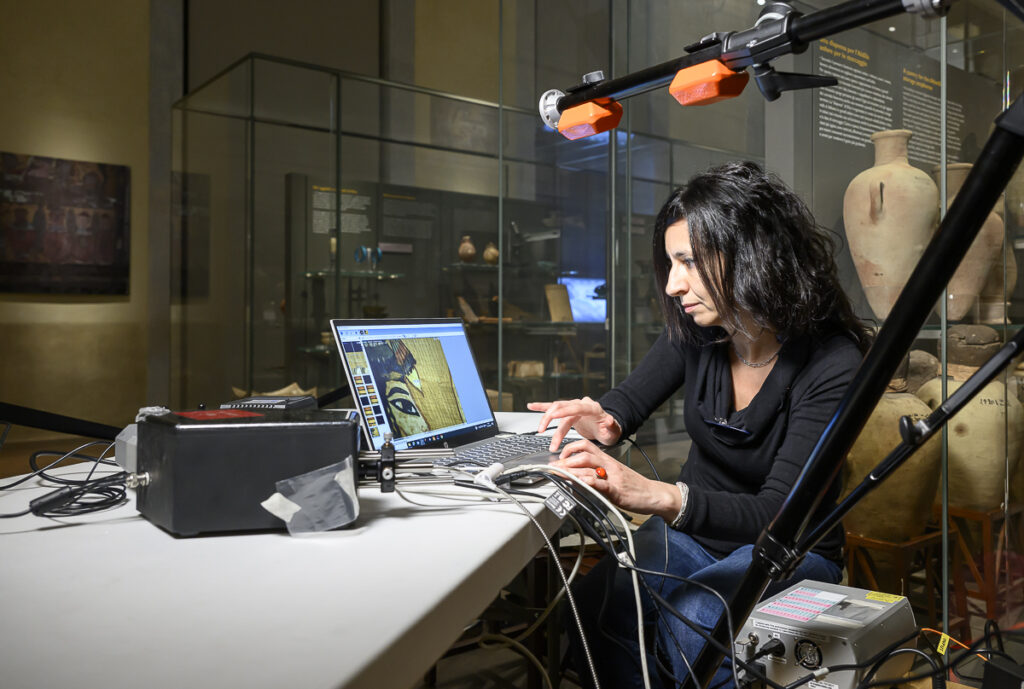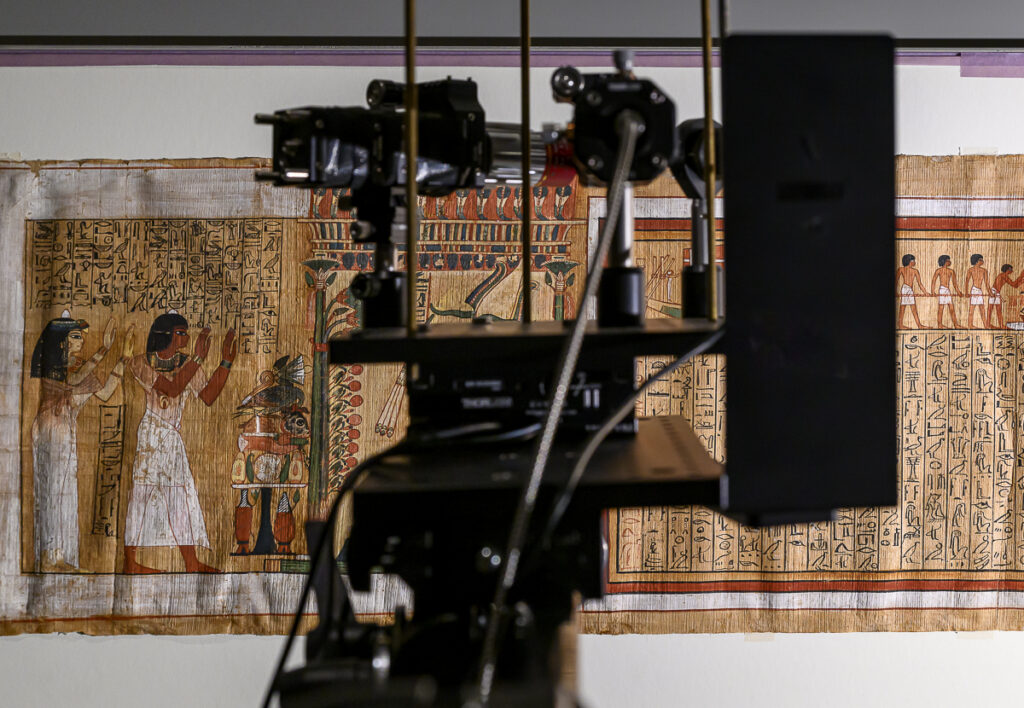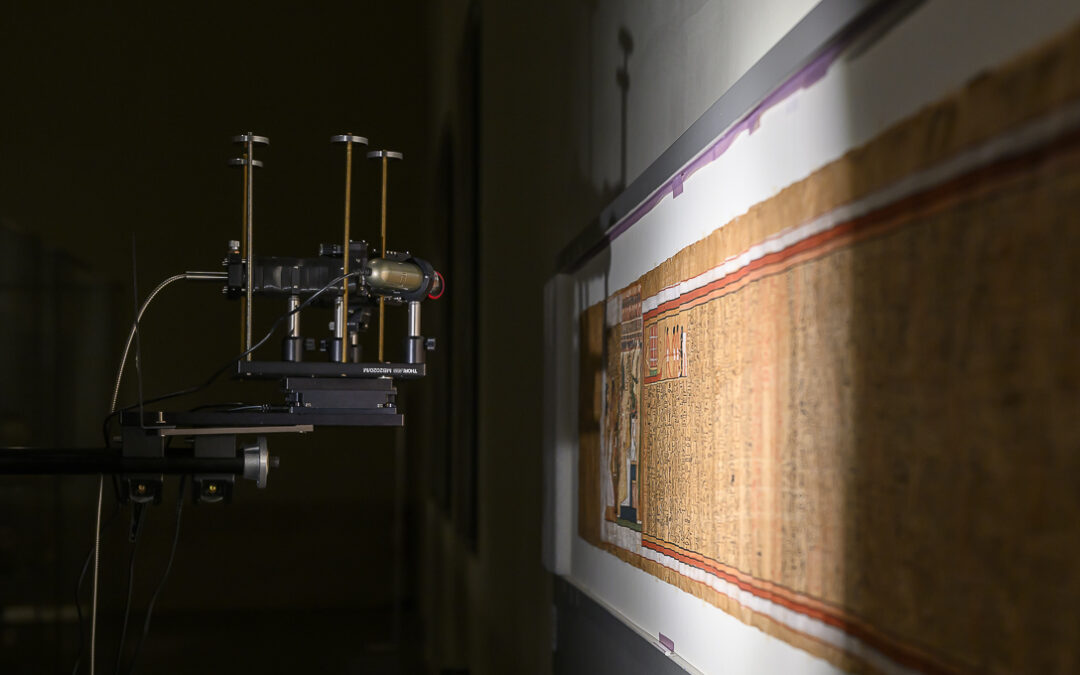A collaboration team of CNR ISPC, Milan, Italy and STFC’s Central Laser Facility, Oxfordshire, UK has established an effective method based around advanced non-invasive Raman spectroscopy for cultural heritage applications. They are now routinely using micro-Spatially Offset Raman Spectroscopy (micro-SORS), originally developed by the team for the non-invasive probing of objects of cultural heritage, to reveal the chemical composition of hidden layers of paint in frescoes, paintings and statues and for monitoring the diffusion profiles of conservation products in matrices. This information is required for example for effective and safe restoration of objects of art or when studying artist techniques.
Recently, the above team partnered with The National Archives (TNA), London, UK and applied micro-SORS to read 18th century historic documents and letters, such as never delivered sealed letters seized on ships. This study was carried out at the TNA premises using an open geometry Horiba Raman microscope adapted for micro-SORS sampling. Using optical properties of the sample such as sample absorption, fluorescence in conjunction with photon diffusion effects enabled the team to recover, in a non-invasive way, invisible texts through paper.
Moreover, recently the team has established detailed understanding of method’s performance in boundary region between macro- and micro-SORS enabling more effective and wider deployment of the techniques in cultural heritage applications. Until recently, the interface between the macro- and micro-SORS regimes was little understood posing a challenge for application of the technique at mesoscale (e.g. samples with ~1 mm thick overlayers). The study clarified when micro- and macro-SORS methods are each better suited for a particular set of samples and provided a simple set of rules for selecting the most optimum sampling approach for Cultural Heritage application.
Currently, an advanced portable micro-SORS prototype, developed by the team at ISPC-CNR, Milan, in collaboration with University of Cincinnati, Ohio, US, is included in the MOLAB E-RIHS.it equipment; the device can collect conventional and micro-SORS spectra simultaneously and without any optical component movements, paving the way for in-situ non-invasive molecular analysis of art objects.


For further information:

